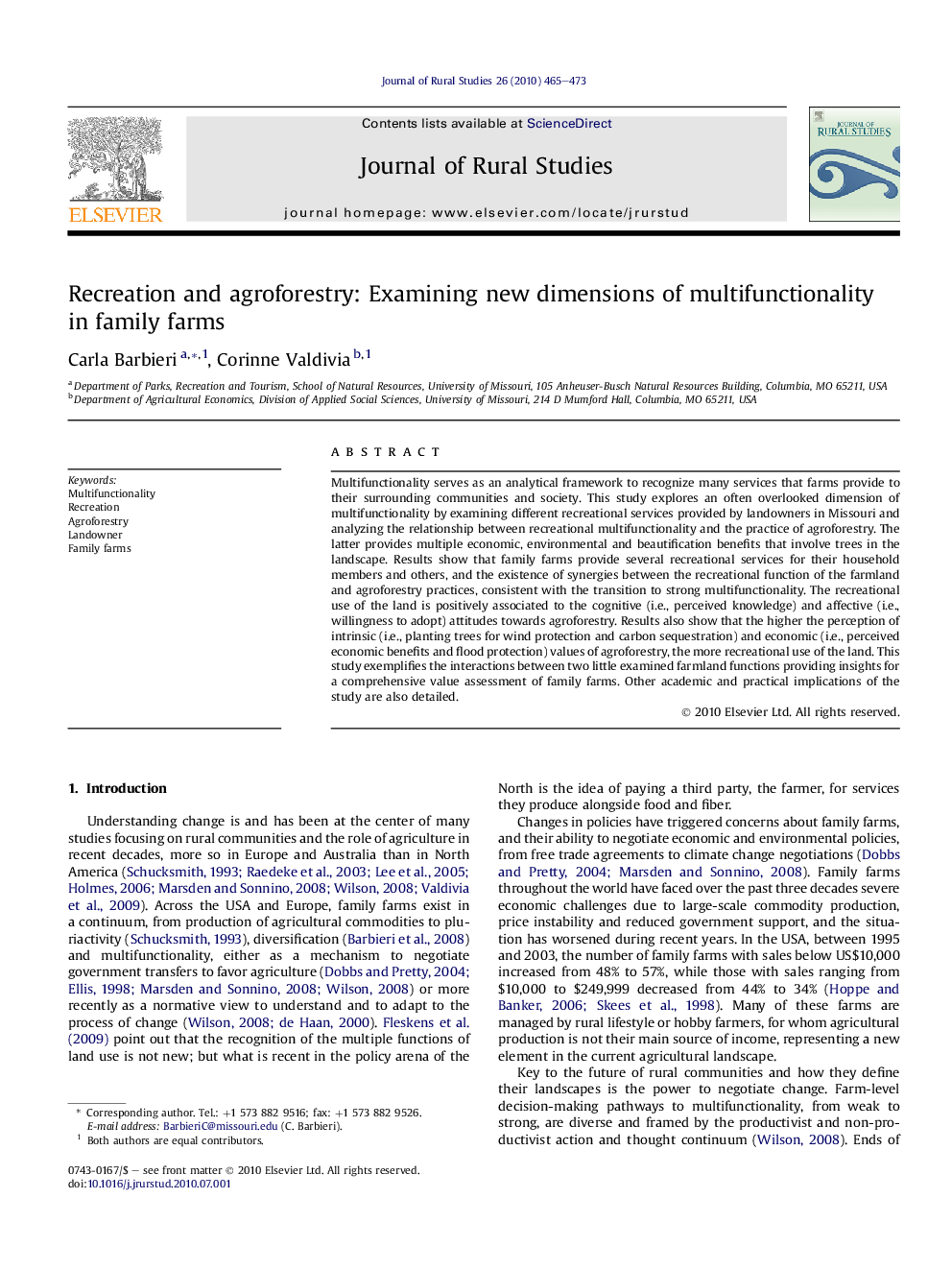| Article ID | Journal | Published Year | Pages | File Type |
|---|---|---|---|---|
| 92769 | Journal of Rural Studies | 2010 | 9 Pages |
Multifunctionality serves as an analytical framework to recognize many services that farms provide to their surrounding communities and society. This study explores an often overlooked dimension of multifunctionality by examining different recreational services provided by landowners in Missouri and analyzing the relationship between recreational multifunctionality and the practice of agroforestry. The latter provides multiple economic, environmental and beautification benefits that involve trees in the landscape. Results show that family farms provide several recreational services for their household members and others, and the existence of synergies between the recreational function of the farmland and agroforestry practices, consistent with the transition to strong multifunctionality. The recreational use of the land is positively associated to the cognitive (i.e., perceived knowledge) and affective (i.e., willingness to adopt) attitudes towards agroforestry. Results also show that the higher the perception of intrinsic (i.e., planting trees for wind protection and carbon sequestration) and economic (i.e., perceived economic benefits and flood protection) values of agroforestry, the more recreational use of the land. This study exemplifies the interactions between two little examined farmland functions providing insights for a comprehensive value assessment of family farms. Other academic and practical implications of the study are also detailed.
